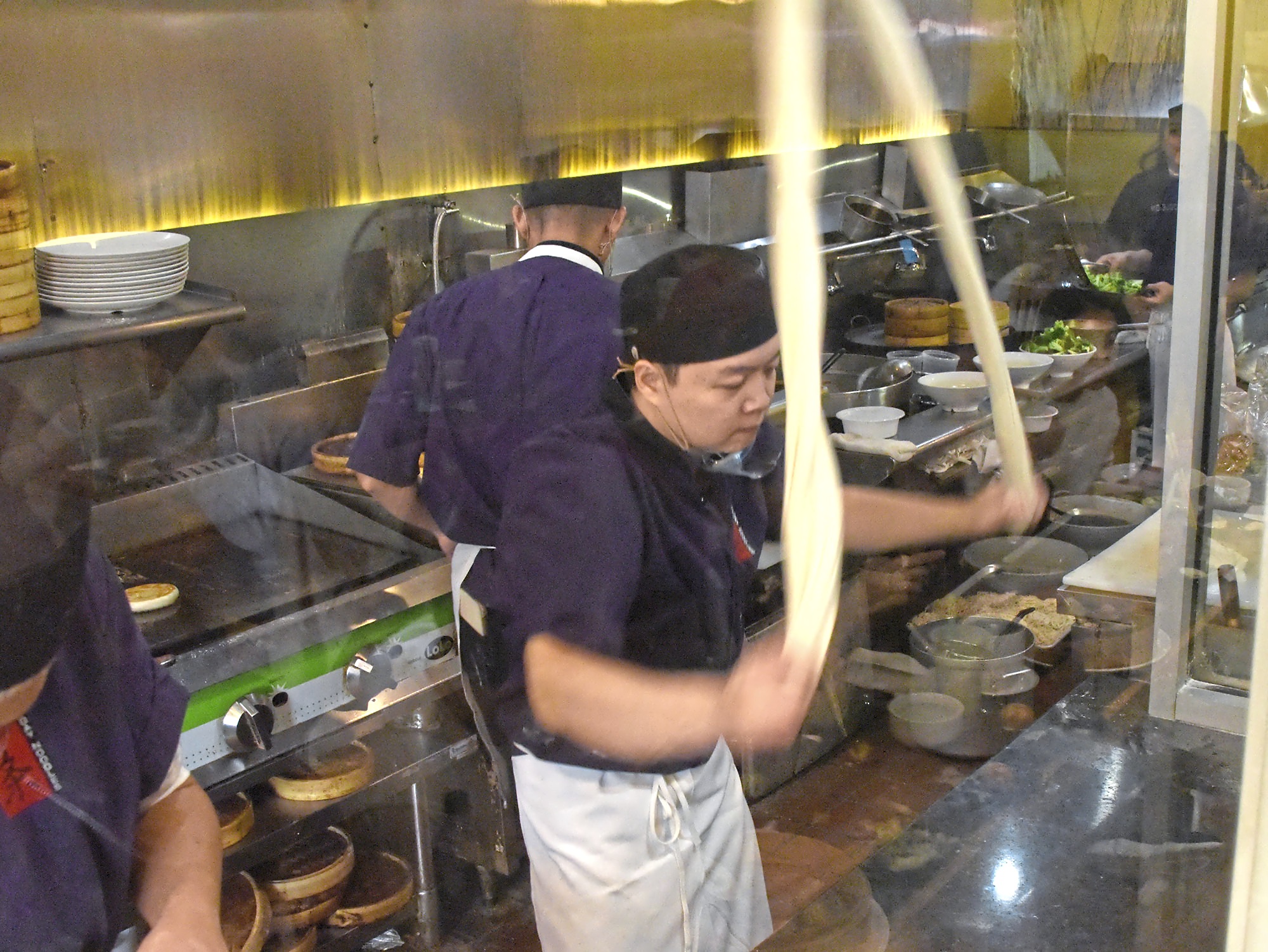
TAIPEI, Taiwan — Though noodles are as popular as ever around the world, Chinese noodle-pulling is a dying art as noodle-making has become automated — made at factories and transported to stores and restaurants.
Yet the disappearance of this elaborate process of making fresh noodles by hand would be a shame: There's something mesmerizing in the theater of watching an expert in a kitchen as he transforms a 3-foot-long muscle of dough into dozens of uniformly shaped strands.
Yes, a person can learn how to make noodles. But as we watch the hands of YouTube Italian Pasta Grannies or even our neighbor's Neapolitan grandmother, we understand they have become experts because it's a part of their culture — and through repetition and muscle memory. Such is the case with Chinese noodle-pulling that, like a dance or a play, is rooted in culture.
The most common refrain about Chinese noodle-pulling is that it's not easy. One of the cooks I met while traveling for this article in Taipei, Wei Jiang, who used to work at Everyday Noodles in Squirrel Hill, said through an interpreter that he knows how to do it, but not well. He sharpened his skills at the Squirrel Hill restaurant after learning the process from other cooks with roots in northwest China.
He pointed to a trio of Everyday Noodle chefs I photographed sitting outside on a lunch break — that happens to be in my Instagram feed from 2015. "I learned from these guys," he said. It's ironic that a Taiwanese dude ended up learning noodle-pulling in Pittsburgh.
I also saw it on display at the iconic noodle house here, Din Tai Fung, where it seemed as if those who knew how to do it were born noodle-pulling and, in some ways, they were. One cook told me through an interpreter that he had learned how to do it at home and later used his skill as an adult, working his way through restaurant kitchens.
With Taipei's fusion of Chinese culture, it makes sense that you'd find proficient noodle-pullers in many restaurants and neighborhoods around the city.
Historically, noodle-pulling is traced to northern Chinese cuisine, writes Jen Lin-Liu in "On the Noodle Road: From Beijing to Rome, with Love and Pasta" (Random House, 2013).
"A culinary Mason-Dixon line runs across China: north of it, abundant wheat fields feed the population," she writes. But as rice moved north, wheat moved to the south and both became popular across China.
Most Chinese historians agree that noodle-pulling originates with the Hui minority, as opposed to the majority Han Chinese, with noodle-pulling a highlight of foods in the northwest cities of Lanzhou and Xi'an.
More specifically, in "Beyond the Great Wall" (Artisan, 2008), a cookbook from Naomi Duguid and Jeffrey Alford, noodle-pulling is attributed to Muslim Uighurs, a Turkic ethnic group in Xinjiang, an autonomous territory in northwest China.
"Uighur-flung noodles," they write, "are extraordinary. And we have tried, a lot, but we must confess we've been unable to make them with much success."
Chinese noodle-pulling is a very physical upper-body activity. It involves kneading and stretching and folding and twisting — followed by a cat's cradle-type weaving, with dough looped around fingers. The result is pliant, chewy noodles, the base for a bowl that's sure to leave a diner full.
Back in Pittsburgh at Everyday Noodles, owner Mike Chen just started paying interested cooks who have been with him on staff for a few years to stay after hours to practice noodle-pulling two nights a week.
He likened noodle-pulling to the specialized skills that go along with becoming a sushi chef. In the case of these new noodle-pullers, it'll be a while before they're making noodles for the restaurant.
"It takes years to learn."

Education Resource
Meet the Journalist: Melissa McCart
Mike Chen, owner of Everyday Noodles, told Pittsburgh Post-Gazette restaurant critic Melissa McCart...



